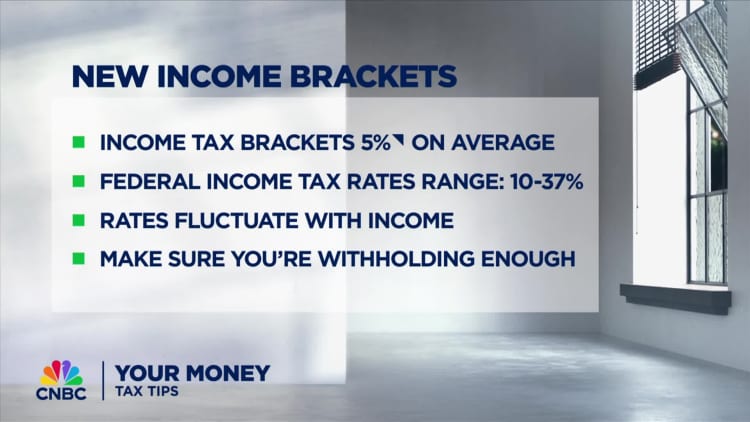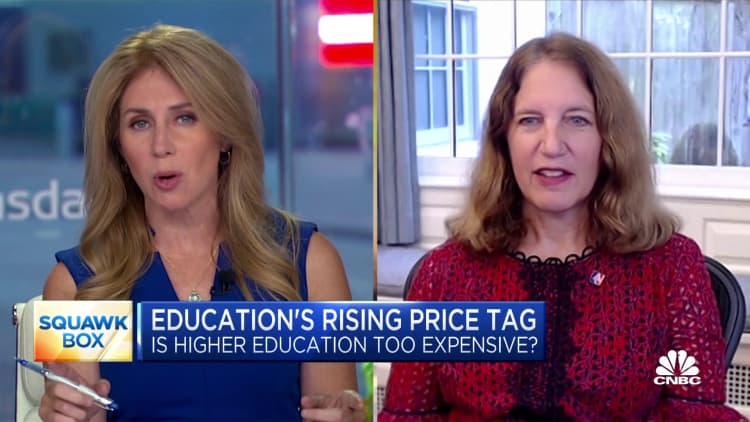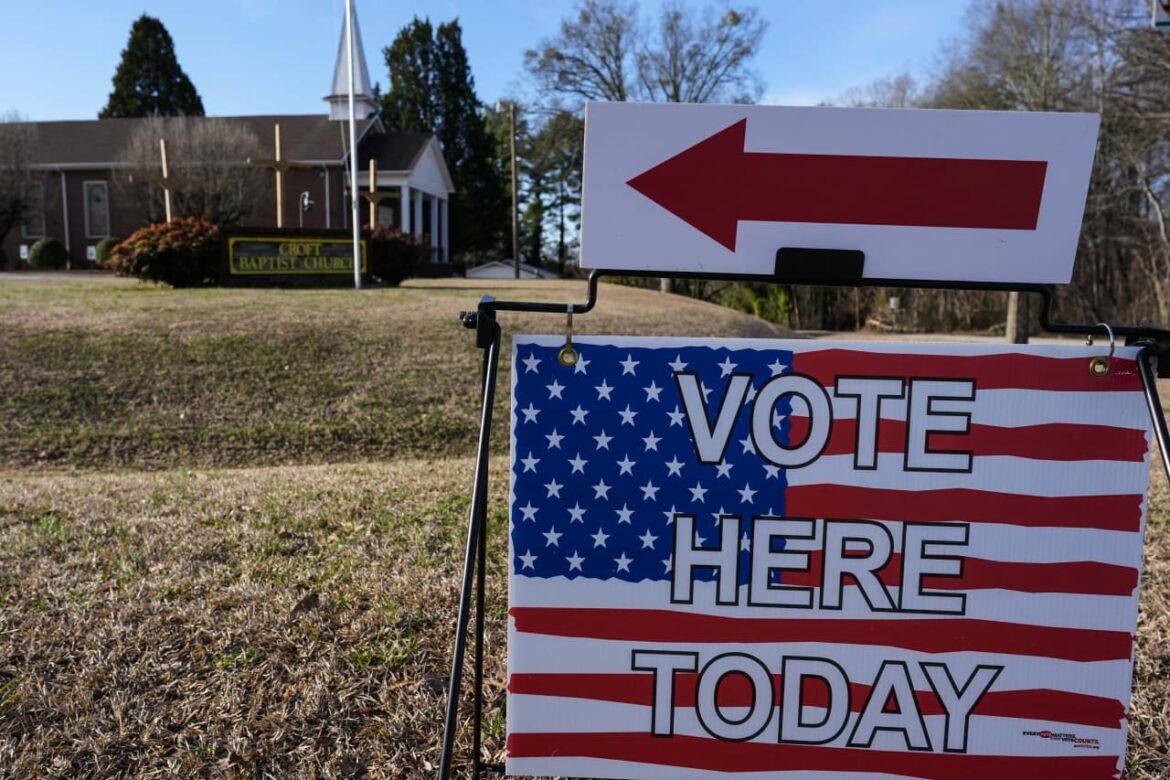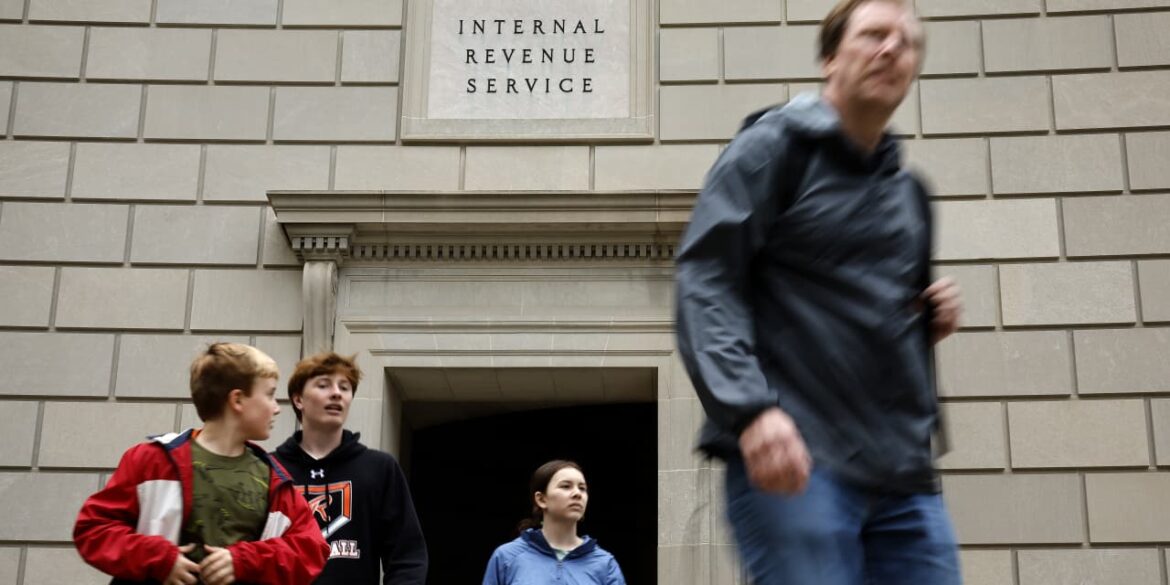
Politically diverse fund-management teams perform better.
Source link
direct
After weeks of testing with roughly 1,500 returns, Direct File, a free tax filing program from the IRS, is now fully open in 12 pilot states, according to the U.S. Department of the Treasury.
While the pilot focuses on “simple tax situations,” the Treasury estimates the pilot could cover about one-third of tax situations for 19 million taxpayers. The Spanish language version opens later on Tuesday at 1 p.m. ET.
“Dozens of countries have provided free tax options to their citizens for years,” Deputy Secretary of the Treasury Wally Adeyemo said during a press call on Monday. “American taxpayers who want to file their taxes for free directly with the IRS should have that option.”
More from Personal Finance:
Trump vs. Biden: What a presidential election rematch could mean for your taxes
Tax pros brace for ‘tidal wave’ of crypto tax scrutiny from the IRS. What investors need to know
IRS targets wealthy ‘non-filers’ with new wave of compliance letters
Treasury officials hope at least 100,000 taxpayers will participate in the Direct File pilot for 2023 filings as the agency makes future decisions about the program, Adeyemo said.
Within five years, the program could save the average filer $160 per year, or a collective $11 billion annually including tax prep fees and time, according to a report from the Economic Security Project released Monday.
IRS Direct File pilot states
The IRS Direct File pilot states include Arizona, California, Florida, Massachusetts, Nevada, New Hampshire, New York, South Dakota, Tennessee, Texas, Washington and Wyoming. Alaska was originally included but is no longer part of the pilot.
The soft launch and limited rollout were intentionally designed to capture data to make improvements and decisions for the future, a senior administrative official said.
Direct File pilot doesn’t support state returns, but the software will guide users from Arizona, California, Massachusetts and New York to a state-supported tax-prep tool.
Direct File pilot open to limited filers
You may qualify for Direct File with a simple, straightforward return, with limited types of income, credits and deductions, according to IRS officials.
The pilot will only accept Form W-2 wages, Social Security retirement income, unemployment earnings and interest of $1,500 or less. This excludes filers with contract income reported via Form 1099-NEC, gig economy workers or self-employed filers.
To qualify, you must claim the standard deduction, which is $13,850 for single filers and $27,700 for married couples filing jointly for 2023.
Direct File only accepts a few credits: the earned income tax credit, child tax credit and credit for other dependents. The software also accepts deductions for student loan interest and educator expenses.
Scrutiny of IRS Direct File
The Direct File pilot launch comes amid pushback from the private tax filing industry. There has also been scrutiny from some Republicans who have questioned the agency’s authority to create the program.
When asked about Direct File during a House Ways and Means hearing in February, IRS Commissioner Danny Werfel said the agency has “a responsibility and an authority to offer taxpayers different approaches for how to meet their tax obligation.”
Taxpayers have several free filing options this season, including IRS Free File, Volunteer Income Tax Assistance, Tax Counseling for the Elderly and private company software.

Want free tax prep from the IRS? Direct File will open soon in these 12 states.

The Internal Revenue Service’s free tax-prep platform will soon be open for business.
After slowly increasing capacity on its Direct File platform, the IRS will make the platform available to a wider audience on Monday, the agency said.
The platform is expected to be fully up and running on March 12. The pilot program can only prepare relatively basic tax returns, and it will only be available to eligible taxpayers in 12 states: Arizona, California, Florida, Massachusetts, Nevada, New Hampshire, New York, South Dakota, Tennessee, Texas, Washington state and Wyoming.
But Direct File marks the widespread debut of a free, government-run answer to mass-market online tax preparation from commercial providers like TurboTax
INTU,
and H&R Block
HRB,
Regulators at the Federal Trade Commission have alleged that both TurboTax and H&R Block misled consumers about the extent of their free tax-preparation services. Both companies deny the allegations.
There are other free tax-filing options out there, including the IRS Free File program. That’s an IRS partnership with tax-software companies available to taxpayers with incomes of up to $79,000.
The IRS Direct File program has no income limits, just like the free tax-prep programs from H&R Block
HRB,
and TurboTax
INTU,
But all three can only be used for certain types of tax returns, mostly simple ones.
The IRS has slowly rolled out Direct File, making it available to taxpayers for certain hours of the day. Starting March 4, it will be available to new users 24 hours a day every day, according to an IRS official.
However, people who want to use the platform should look for a notice at the top of the site saying it’s open. The platform may be temporarily unavailable at times if too many users take up all the available slots for a given day, the official said.
“But more spaces will be added every day, and our goal is to ensure that all taxpayers who are interested and eligible can try out Direct File for themselves,” the IRS official added.
Someone who has already started a tax return can keep working on it even if the site isn’t accepting new users, according to the IRS.
Users in Arizona, California, Massachusetts and New York — the four states on the list with a state income tax — can also be connected to free online preparation of their state returns. Direct File can also help users in Washington state who are eligible for a certain tax credit.
The Direct File program can handle returns with W-2 job wages, common credits like the child tax credit and the student-loan interest deduction. It can’t support returns that need to report capital gains or independent-contractor income.
People who plan to use Direct File should be ready to answer eligibility questions when they log on to the program. IRS officials who designed the platform said they wanted to ask up front to quickly sort out people who cannot use the service.
The IRS began accepting and processing 2023 tax returns on Jan. 29. It has now processed over 44 million returns through late February, agency statistics show. Taxpayers are receiving an average refund of $3,213, which is more than 4% higher than the average amount at the comparable point last year.
200,000 students accepted to college under direct admissions program

More schools offer guaranteed admission
In the wake of the Supreme Court’s affirmative action ruling, colleges are looking for new strategies to recruit students from diverse backgrounds, according to Jenny Rickard, CEO of the Common App.
“It’s about removing barriers,” she said. “It’s about equity and access.”
Each year, more than 1 million students — one-third third of whom are first-generation — use the common application to apply to school, research financial aid and scholarships, and connect to college counseling resources, according to the nonprofit organization.
Individual schools and school systems have also rolled out similar initiatives to broaden their reach. Last spring, the State University of New York sent automatic acceptance letters to 125,000 graduating high school students.
College enrollment is falling
Photo: Bryan Y.W. Shin | Wikicommons
This fall, undergraduate enrollment grew for the first time since 2020, according to the National Student Clearinghouse Research Center’s latest report.
But gains were not shared across the board. Community colleges notched the biggest increases year over year, the report found, accounting for almost 60% of the increase in undergraduates.
“Students are electing to pursue shorter-term programs,” said Doug Shapiro, executive director of the National Student Clearinghouse Research Center. “More 18- to 20-year-olds, especially at four-year institutions, are opting out.”
Tuition keeps rising
Not only are fewer students interested in pursuing a four-year degree after high school, but the population of college-age students is also shrinking, a trend referred to as the “enrollment cliff.”
In fact, undergraduate enrollment in the U.S. topped out at roughly 18 million students over a decade ago, according to the National Center for Education Statistics.
These days, only about 62% of high school seniors in the U.S. immediately go on to college, down from 68% in 2010. Low-income students who feel priced out of a postsecondary education are often those who opt out.
Recent data from the Common App found that that more than half, or 55%, of students who use the Common App’s online application are from the highest-income families.
Steadily, college is becoming a path for only those with the means to pay for it, other reports also show.
And costs are still rising. Tuition and fees at four-year private colleges rose 4% to $41,540 in the 2023-24 school year from $39,940 in 2022-23. At four-year, in-state public colleges, the cost increased 2.5% to $11,260 from $10,990 the prior school year, according to the College Board.
Financial aid is key
“Just because a school offers acceptance doesn’t mean the finances will line up,” cautioned Robert Franek, The Princeton Review’s editor-in-chief and author of “The Best 389 Colleges.”
“It’s important to ask critical questions,” he said. Students should consider how much aid is being awarded, as well as the academic fit, campus culture and career services offerings.
Further, even if acceptance is not guaranteed, there are many schools that accept the majority of those who apply, Franek said.
In fact, of The Princeton Review’s list of 389 best colleges, 254 schools admit at least half of all applicants. More than one-quarter admit at least 80% of those who apply. (On the flip side, only 8% of schools on the list of best colleges admit less than 10% of applicants.)
“We always think of the most competitive schools but there is a school, and likely many schools, out there to consider,” Franek said.




